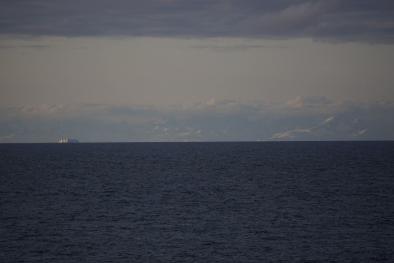Science Source
Increased risk of a shutdown of ocean convection posed by warm North Atlantic summers
In chilly waters on either side of Greenland, the ocean circulation “overturns,” as surface waters traveling northward become colder and more dense and eventually sink, traveling back southward toward Antarctica at extreme depths. This key sinking process is called convection. But too much fresh water at the surface could interfere with it, because with less salt, the water loses density and does not sink as easily."
- The fast-melting Arctic is already messing with the ocean’s circulation, scientists say (The Washington Post, March 14, 2018)
- States that a shutdown of ocean convection in the subpolar North Atlantic, triggered by enhanced melting over Greenland, is regarded as a potential transition point into a fundamentally different climate regime
- Notes that a key uncertainty for future convection resides in the relative importance of melting in summer and atmospheric forcing in winter
- Works from a comprehensive dataset, including hydrographic records that are over a decade in length from the convection regions
- Investigates the extent to which summer conditions constrain convection
- Finds that warm and fresh summers, characterized by increased sea surface temperatures, freshwater concentrations and melting, are accompanied by reduced losses of heat and buoyancy in winter
- Finds that these reduced losses mean the freshwater remains near the surface and contributes to delaying convection
Related Content
Science Source
| Nature Climate Change
Connecting AMOC changes
Annalisa Cherchi
Headline

Mar 15, 2018 | Washington Post
The fast-melting Arctic is already messing with the ocean’s circulation, scientists say
Science Source
| Nature Climate Change
Arctic sea-ice decline weakens the Atlantic Meridional Overturning Circulation
Florian Sévellec, Alexey V. Fedorov, Wei Liu
Science Source
| Nature
Decline in global oceanic oxygen content during the past five decades
Sunke Schmidtko, Lothar Stramma, Martin Visbeck


